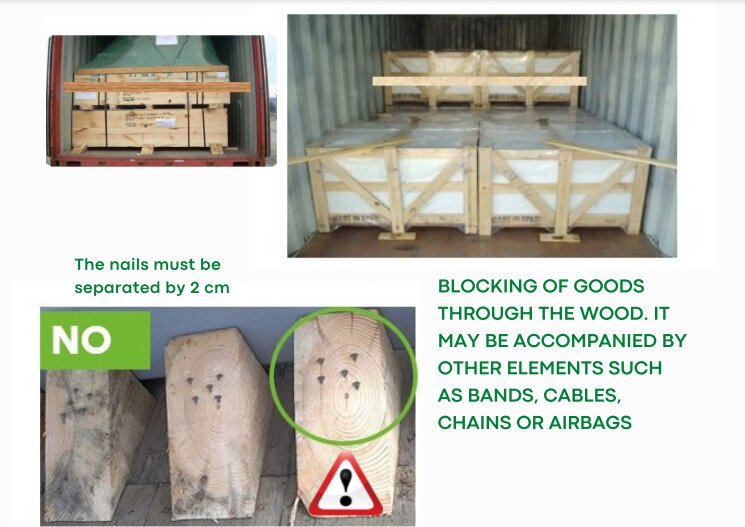Stowage techniques with wood and what requirements must be cumply with in order to be able to perform it correctly.
A correct lashing or securing of cargo is key when transporting cargo by sea, land or air.
Table of Contents
Therefore, in today’s post we will explore into the different techniques:

First of all, we must take into account the international legislation required in phytosanitary terms, this would be the one corresponding to ISPM in section number 15.

This regulation governs the requirements that timber must meet in order to pass through customs controls in a foreign country other than the country of origin.

Once we take this prerequisite into account, we define four basic types of wood blocking based on their position with respect to the load:

The TM that holds a nail of about 10 cm depending on the friction is reflected, according to calculations of the IMO Model Course 3.18
In the European Guide, the number of nails to be used for fixing the loads is determined by:

The nails will be placed with a separation of 2 cm, the slats being at least 10x10cm.
We must also take into account the height of nailing for the calculation of the depth.


We must take into account the requirements ISPM15 and the different methodology when it comes to carving the load, finally will fix this wood by nails with the guidelines marked above.
In conclusion, the stowage of wood is one of the most economical and simple methods when making a wrinkle.
Contact us at: info@360ecopackaging.com or visit our web here.
![]()






